docker基础学习指令
文章目录
- @[toc]
- docker基础常用指令
- 一、docker 基础命令
- 二、docker 镜像命令
- 1. docker images
- 2. docker search
- 3. docker pull
- 4. docker system df
- 5. docker rmi
- 1. Commit 命令
- 三、 docker 容器命令
- 1. docker run
- 2. docker logs
- 3. docker top
- 4. docker inspect
- 5. docker cp
- 6. docker export 与import
- 四、发布镜像到阿里云
- 1. 原理图:
- 2. 指令
- 五、docker私有仓库-docker registry
- 1. 下载镜像 Docker Registry
- 2. 运行私有库Registry, 相当于本地有个私有Docker hub
- 3. 运行ubuntu系统,并安装 ifconfig 指令
- 4. curl 验证私服库上有什么镜像
- 5. 将本地新镜像修改为符合私服规范的Tag
- 6. vim 命令新增如下内容: vim /etc/docker/daemon.json
- 7. push 推送到私服库
- 8. 查看 私服库内的镜像
- 9. 从私服库pull 镜像,并运行
- 六、docker 容器数据卷
- 1. 坑:容器卷记得加入
- 2. 运行一个带有容器卷存储功能的容器实例
- 3. 容器卷案例
- 宿主机vs容器之间映射添加容器卷
- 查看挂载路径
- 读写规则映射添加说明
- 卷的继承和共享
- 4. 容器卷特点
- 七、docker 常用软件安装
- 1. 基本操作命令
- 2. docker 安装MySQL——简单版
- 3. docker 安装MySQL——实战版
- 4. docker 安装Redis
文章目录
- @[toc]
- docker基础常用指令
- 一、docker 基础命令
- 二、docker 镜像命令
- 1. docker images
- 2. docker search
- 3. docker pull
- 4. docker system df
- 5. docker rmi
- 1. Commit 命令
- 三、 docker 容器命令
- 1. docker run
- 2. docker logs
- 3. docker top
- 4. docker inspect
- 5. docker cp
- 6. docker export 与import
- 四、发布镜像到阿里云
- 1. 原理图:
- 2. 指令
- 五、docker私有仓库-docker registry
- 1. 下载镜像 Docker Registry
- 2. 运行私有库Registry, 相当于本地有个私有Docker hub
- 3. 运行ubuntu系统,并安装 ifconfig 指令
- 4. curl 验证私服库上有什么镜像
- 5. 将本地新镜像修改为符合私服规范的Tag
- 6. vim 命令新增如下内容: vim /etc/docker/daemon.json
- 7. push 推送到私服库
- 8. 查看 私服库内的镜像
- 9. 从私服库pull 镜像,并运行
- 六、docker 容器数据卷
- 1. 坑:容器卷记得加入
- 2. 运行一个带有容器卷存储功能的容器实例
- 3. 容器卷案例
- 宿主机vs容器之间映射添加容器卷
- 查看挂载路径
- 读写规则映射添加说明
- 卷的继承和共享
- 4. 容器卷特点
- 七、docker 常用软件安装
- 1. 基本操作命令
- 2. docker 安装MySQL——简单版
- 3. docker 安装MySQL——实战版
- 4. docker 安装Redis
docker基础常用指令
一、docker 基础命令
| 命令 | 说明 |
|---|---|
| docker --help | 查看常用命令 |
| docker search 镜像名 | 从仓库上搜索镜像 |
| docker pull 镜像名[:version] | 下载镜像 |
| docker images [镜像名:version] | 查看全部镜像/指定镜像 |
| docker rmi 镜像ID | 删除一个或多个镜像 |
| docker run 镜像名:version / 镜像ID | 运行镜像 |
| docker attach 容器ID | 不重开新线程启动容器,exit退出该容器后容器停止运行 |
| docker exec -it 容器ID bash | 启动容器进入交互终端界面,exit退出容器,容器继续运行 |
| docker start 容器ID | 启动容器,运行 |
| docker restart 容器ID | 重启容器 |
| docker stop 容器ID | 停止容器 |
| docker rm 容器ID,… | 删除一个或多个容器 |
| docker rm -f $(docker ps -a) | 一次性删除全部容器,容器运行时需要强制删除需要加上-f |
| docker rmi -f $(docker images) | 一次性删除全部镜像,慎用 |
docker --help
Common Commands:run 从镜像创建并运行新容器exec 在运行的容器中执行命令ps 列出容器build 从Dockerfile构建图像pull 从仓库下载镜像push 将镜像上载到仓库images 列出镜像login 登录到仓库logout 退出登录仓库search 在Docker Hub中搜索镜像version 显示Docker版本信息info 显示系统范围的信息Management Commands:builder Manage buildsbuildx* Docker Buildxcompose* Docker Composecontainer Manage containerscontext Manage contextsimage Manage imagesmanifest Manage Docker image manifests and manifest listsnetwork Manage networksplugin Manage pluginssystem Manage Dockertrust Manage trust on Docker imagesvolume Manage volumesSwarm Commands:swarm Manage SwarmCommands:attach 将本地标准输入、输出和错误流附加到正在运行的容器commit 根据容器的更改创建新镜像cp 在容器和本地文件系统之间复制文件/文件夹create 创建新容器diff 检查对容器文件系统上的文件或目录的更改events 从服务器获取实时事件export 将容器的文件系统导出为tar存档history 显示镜像的历史记录import 从tarball导入内容以创建文件系统映像inspect 返回Docker对象的低级信息kill 杀死一个或多个正在运行的容器load 从tar存档或STDIN加载图像logs 获取容器的日志pause 暂停一个或多个容器中的所有进程port 列出容器的端口映射或特定映射rename 重命名容器restart 重新启动一个或多个容器rm 移除一个或多个容器rmi 删除一个或多个镜像save 将一个或多个镜像保存到tar存档(默认情况下流式传输到STDOUT)start 启动一个或多个停止的容器stats 显示容器资源使用情况统计信息的实时流stop 停止一个或多个正在运行的容器tag 创建一个引用SOURCE_IMAGE的标记TARGET_IMAGEtop 显示容器的运行进程unpause 取消暂停一个或多个容器中的所有进程update 更新一个或多个容器的配置wait 阻止,直到一个或多个容器停止,然后打印其退出代码Global Options:--config string Location of client config files (default "/root/.docker")-c, --context string Name of the context to use to connect to the daemon(overrides DOCKER_HOST env var and default contextset with "docker context use")-D, --debug Enable debug mode-H, --host list Daemon socket to connect to-l, --log-level string Set the logging level ("debug", "info", "warn","error", "fatal") (default "info")--tls Use TLS; implied by --tlsverify--tlscacert string Trust certs signed only by this CA (default"/root/.docker/ca.pem")--tlscert string Path to TLS certificate file (default"/root/.docker/cert.pem")--tlskey string Path to TLS key file (default "/root/.docker/key.pem")--tlsverify Use TLS and verify the remote-v, --version Print version information and quit二、docker 镜像命令
1. docker images
docker images 显示所有镜像
- docker images -a 列出本地所有的镜像(含历史映像层)
- docker images -q 只显示镜像ID。

2. docker search
docker search 搜索镜像
- docker search --limit 3 mysql 搜索仓库中前三个mysql镜像

3. docker pull
docker pull 获取镜像
- docker pull 镜像名:version 可获取对应版本的镜像

4. docker system df
docker system df 查看镜像/容器/数据卷所占空间

5. docker rmi
docker rmi 镜像ID 删除镜像

1. Commit 命令
[!tip]
docker commit 提交容器副本使之成为一个新的镜像
docker commit -m="提交的描述信息" -a="作者" 容器ID 要创建的目标镜像名:[标签名]
三、 docker 容器命令
1. docker run
docker run [OPTIONS] IMAGE [COMMAND] [ARG…]
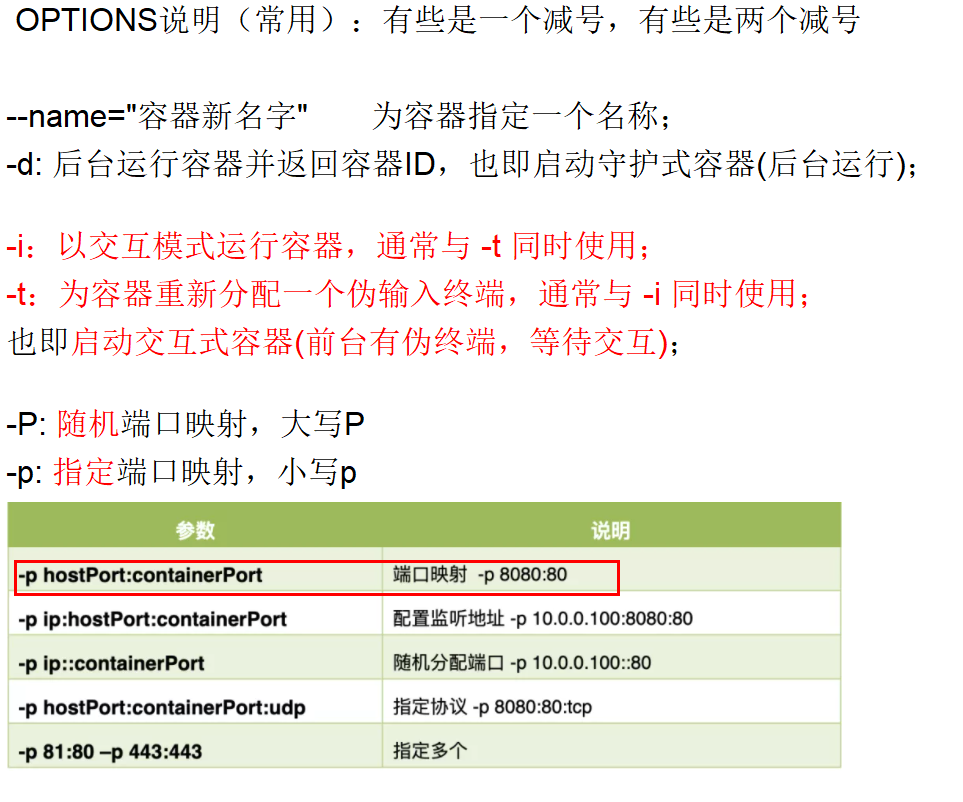
-
交互式容器
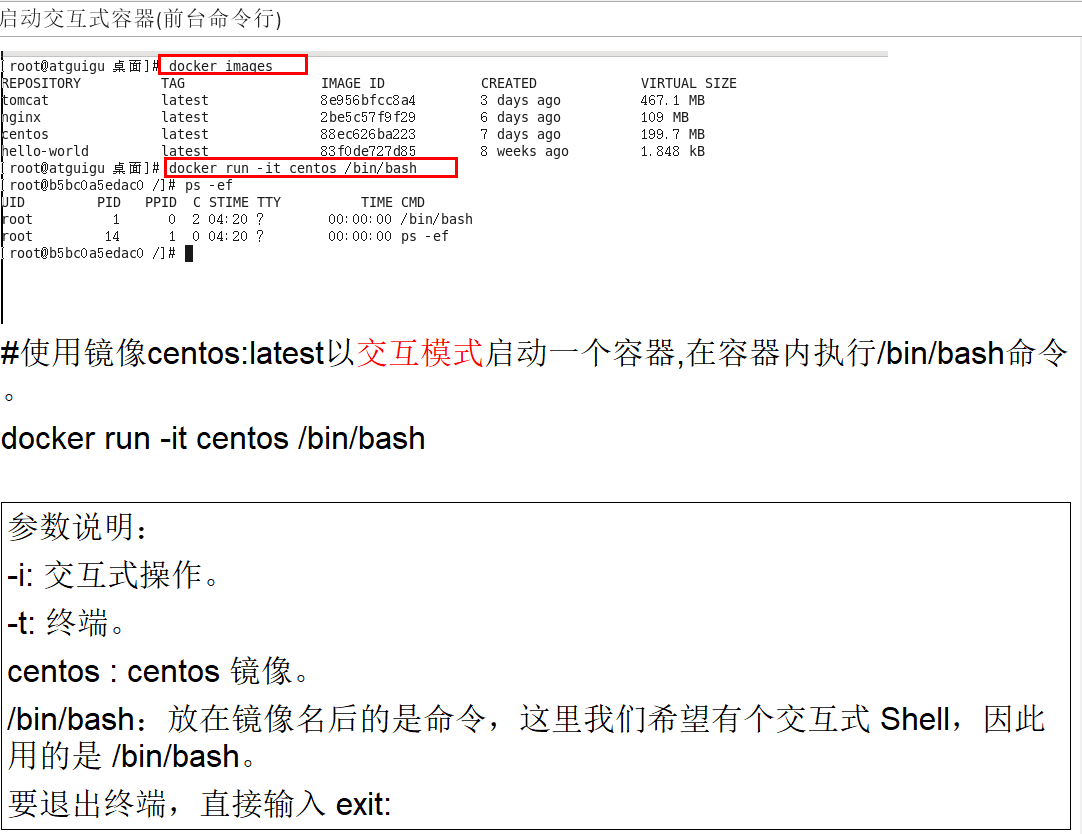
2. docker logs
docker logs 容器ID 查看容器日志
3. docker top
docker top 容器ID 查看容器内运行的进程
4. docker inspect
docker inspect 容器ID 查看容器内部细节
- 可查看容器的挂载位置等
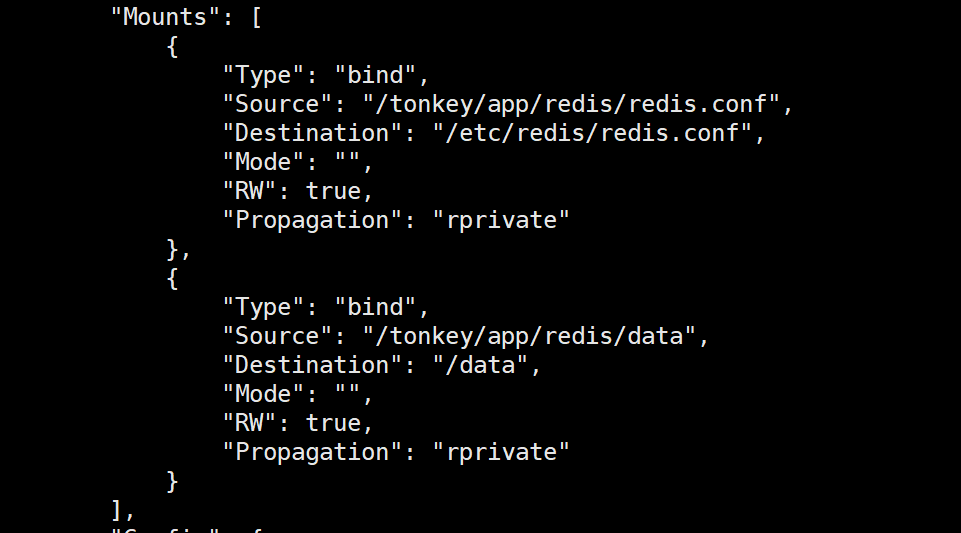
5. docker cp
公式:docker cp 容器ID:容器内路径 目的主机路径

6. docker export 与import
export 导出容器的内容留作为一个tar归档文件[对应import命令]
import 从tar包中的内容创建一个新的文件系统再导入为镜像[对应export]
四、发布镜像到阿里云
1. 原理图:

2. 指令
1. 登录阿里云Docker Registry$ docker login --username=甘苦寸心知148 registry.cn-hangzhou.aliyuncs.com用于登录的用户名为阿里云账号全名,密码为开通服务时设置的密码。您可以在访问凭证页面修改凭证密码。
2. 从Registry中拉取镜像$ docker pull registry.cn-hangzhou.aliyuncs.com/tonkey/docker-demo:[镜像版本号]3. 将镜像推送到Registry$ docker login --username=甘苦寸心知148 registry.cn-hangzhou.aliyuncs.com
$ docker tag [ImageId] registry.cn-hangzhou.aliyuncs.com/tonkey/docker-demo:[镜像版本号]
$ docker push registry.cn-hangzhou.aliyuncs.com/tonkey/docker-demo:[镜像版本号]请根据实际镜像信息替换示例中的[ImageId]和[镜像版本号]参数。
4. 选择合适的镜像仓库地址从ECS推送镜像时,可以选择使用镜像仓库内网地址。推送速度将得到提升并且将不会损耗您的公网流量。如果您使用的机器位于VPC网络,请使用 registry-vpc.cn-hangzhou.aliyuncs.com 作为Registry的域名登录。
5. 示例使用"docker tag"命令重命名镜像,并将它通过专有网络地址推送至Registry。$ docker images
REPOSITORY TAG IMAGE ID CREATED VIRTUAL SIZE
registry.aliyuncs.com/acs/agent 0.7-dfb6816 37bb9c63c8b2 7 days ago 37.89 MB
$ docker tag 37bb9c63c8b2 registry-vpc.cn-hangzhou.aliyuncs.com/acs/agent:0.7-dfb6816使用 "docker push" 命令将该镜像推送至远程。$ docker push registry-vpc.cn-hangzhou.aliyuncs.com/acs/agent:0.7-dfb6816
五、docker私有仓库-docker registry
1. 下载镜像 Docker Registry
docker pull registry
2. 运行私有库Registry, 相当于本地有个私有Docker hub
docker run -d -p 5000:5000 -v /tonkey/myregistry/:/tmp/registry --privileged=true registry
[!tip]
参数说明:
参数名称 解释 -i 交互 -t 终端 -d 后台守护进程的方式运行 -p 指定主机与容器的端口映射 -P(大写) 随机端口映射 -v 挂载地址映射 默认情况下,仓库被创建在容器的 /var/lib/registry 目录下,建议自行用容器卷映射,方便与宿主机联调
3. 运行ubuntu系统,并安装 ifconfig 指令
apt-get update
apt-get install net-tools
4. curl 验证私服库上有什么镜像
curl -XGET http://192.168.62.20:5000/v2/_catalog
#curl -XGET http://服务器ip地址:5000/v2/_catalog
可通过命令 ifconfig查看 服务器ip地址
ifconfig
5. 将本地新镜像修改为符合私服规范的Tag
[!tip]
前面配置阿里云加速器的daemo.json 文件,配置后访问官网会快些
docker tag tonkeyubuntu:1.2 192.168.62.20:5000/tonkeyubuntu:1.2
#docker tag 本地镜像名称 ip地址:端口号/镜像名称 #查看配置docker 镜像
docker images
6. vim 命令新增如下内容: vim /etc/docker/daemon.json
{"registry-mirrors": ["https://f45ncj6v.mirror.aliyuncs.com"],"insecure-registries":["192.168.62.20:5000"] # i p地址为自己虚拟机/服务器的ip地址
}7. push 推送到私服库
docker push 192.168.62.20:5000/tonkeyubuntu:1.2
# docker push ip地址:5000/镜像名称:1.2 (ip地址:5000/镜像名称) 为修改后的镜像名称
8. 查看 私服库内的镜像
curl -XGET http://192.168.62.20:5000/v2/_catalog

9. 从私服库pull 镜像,并运行
# 拉取镜像
docker pull 192.168.62.20:5000/tonkeyubuntu:1.2
# 运行
docker run -it --name="自定义容器名称" 192.168.62.20:5000/tonkeyubuntu:1.2 /bin/bash
六、docker 容器数据卷
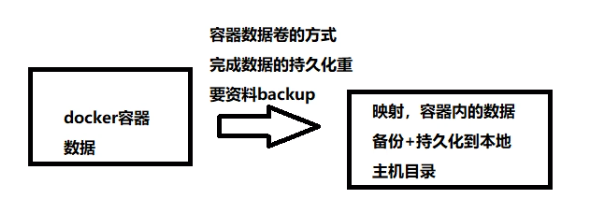
1. 坑:容器卷记得加入
--privileged=true
[!NOTE]
原因:
容器卷说明:
卷就是目录或文件,存在于一个或多个容器中,由 docker 挂在到容器,但不属于联合文件系统,因此能够绕过 Union File System 提供一些用于持续存储或共享数据的特性;卷的设计目的就是 数据的持久化, 完全独立于容器的生存周期, 因此 Docker 不会在容器删除时删除其挂载的数据卷
2. 运行一个带有容器卷存储功能的容器实例
docker run -it --privileged=true -v /宿主机绝对路径目录:/容器内目录 镜像名
3. 容器卷案例
宿主机vs容器之间映射添加容器卷
命令:
docker run -it --privileged=true -v /宿主机绝对路径目录:/容器内目录 镜像名
[!tip]
可以有多个 -v 参数,例如绑定日志,配置等等目录
查看挂载路径
docker inpsect 容器名/容器ID
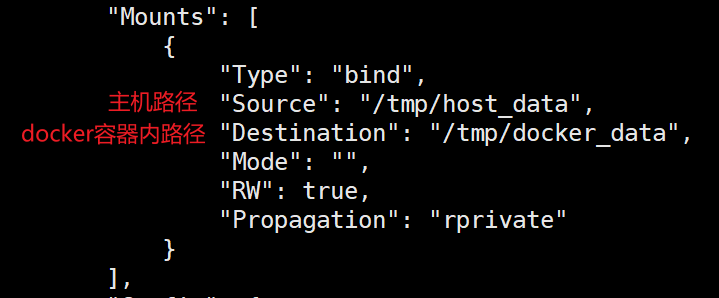
读写规则映射添加说明
-
读写(默认)
docker run -it --privileged=true -v /宿主机绝对路径目录:/容器内目录:rw 镜像名 # rw 可读可写 -
只读
docker run -it --privileged=true -v /宿主机绝对路径目录:/容器内目录:ro 镜像名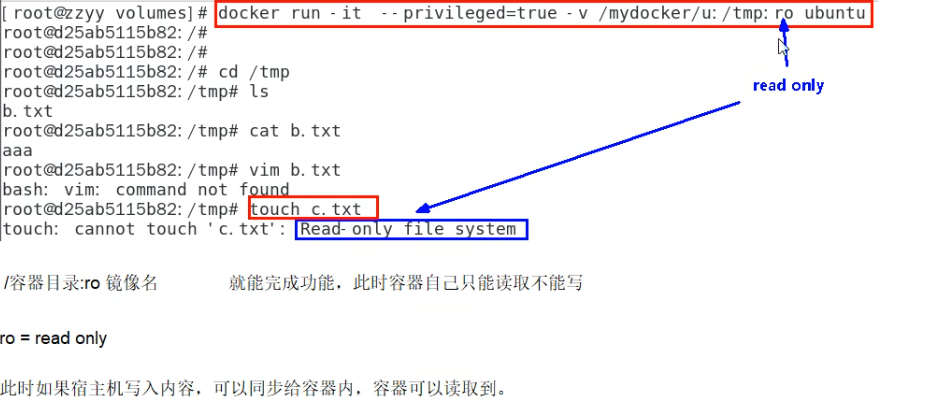
卷的继承和共享
-
容器1完成和宿主机的映射
docker run -it --privileged=true -v /宿主机绝对路径目录:/容器内目录 镜像名 -
容器2继承容器1的卷规则
docker run -it --privileged=true --volumn-from 父容器名/父容器ID --name u2 ubuntu
4. 容器卷特点
- 数据卷可在容器之间共享或重现数据
- 卷中的更改可以直接实时生效,爽
- 数据卷中的更改不会包含在镜像的更新中
- 数据卷的生命周期一直持续到没有容器使用它为止
七、docker 常用软件安装
1. 基本操作命令
- 搜索镜像
docker search 镜像名称
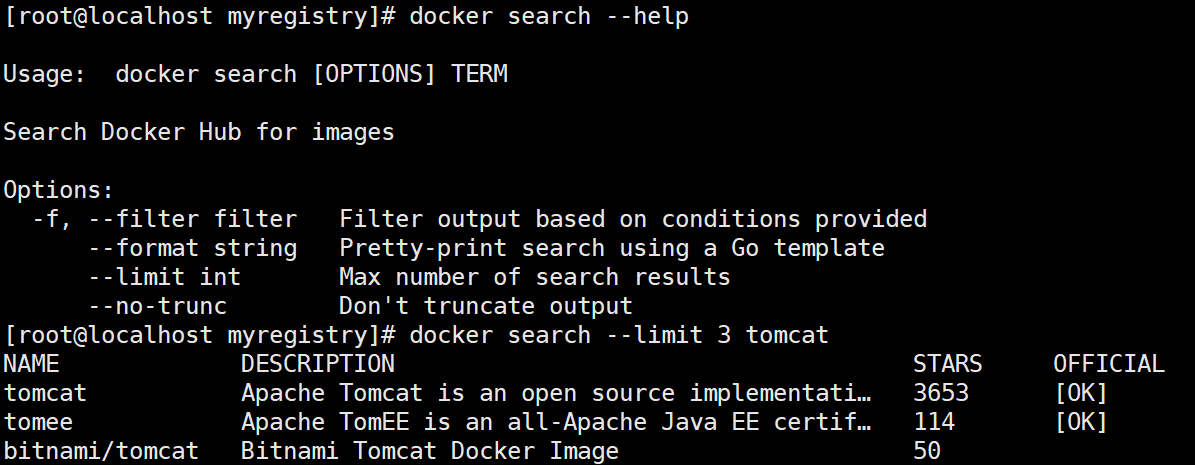
- 拉取镜像
docker pull 镜像名称:版本号
# 不指定版本号默认为最新版
- 查看镜像
docker images [可选镜像名称]

- 启动镜像
常用可选参数说明
docker run 镜像名称:tag/镜像ID
以Tomcat 启动为例,已经提前下载好了tomcat 镜像
# 版本一docker search tomcatdocker pull tomcatdocker run -it -p 8080:8080 tomcat# 版本二docker pull billygoo/tomcat8-jdk8docker run -d -p 8080:8080 --name mytomcat8 billygoo/tomcat8-jdk8
启动后,可以在宿主机/虚拟机浏览器上查看tomcat首页
新版tomcat index页面不在webapps 文件夹内,我们可以删除webapps文件夹后,再将webapps.dist文件夹修改为webapps
# 进入tomcat
docker exec -it tomcat的容器ID /bin/bash
# 查看当前目录内的文件信息
ls -l# 删除webapps 文件夹
rm -r webapps# 将 webapp.dist 改为 webapp
mv webapp.dist webapp

[!note]
如果没有访问到tomcat 主页,可以看看下面方法
# 方法一 # 开启服务器防火墙端口 8080 端口 firewall-cmd --permanent --add-port=8080/tcp # 重新加载防火墙 firewall-cmd --reload # 查看防火墙端口是否成功开启 firewall-cmd --query-port=8080/tcp# 方法二 # 关闭防火墙 systemctl stop firewall.service韩顺平老师Linux视频学习链接
- 停止容器
docker top 容器ID
- 移除容器
docker rm 容器ID
2. docker 安装MySQL——简单版
-
拉取MySQL 镜像
docker pull mysql:5.7 -
使用MySQL 镜像
docker run -p 3306:3306 -e MYSQL_ROOT_PASSWORD=123456 -d mysql:5.7 -
建库建表插入数据
docker exec -it mysql:5.7的容器ID /bin/bash#进入mysql mysql -uroot -p #输入密码mysql> show databases; mysql> create database db01; mysql> use db01; mysql> create table t1 (id int, name varchar(20)); mysql> insert into t1 value(1,'zhangsan'); mysql> select * from t1; +------+----------+ | id | name | +------+----------+ | 1 | zhangsan | +------+----------+ 1 row in set (0.00 sec) -
外部 Win10 也来连接运行在docker 上的 mysql 容器实例服务
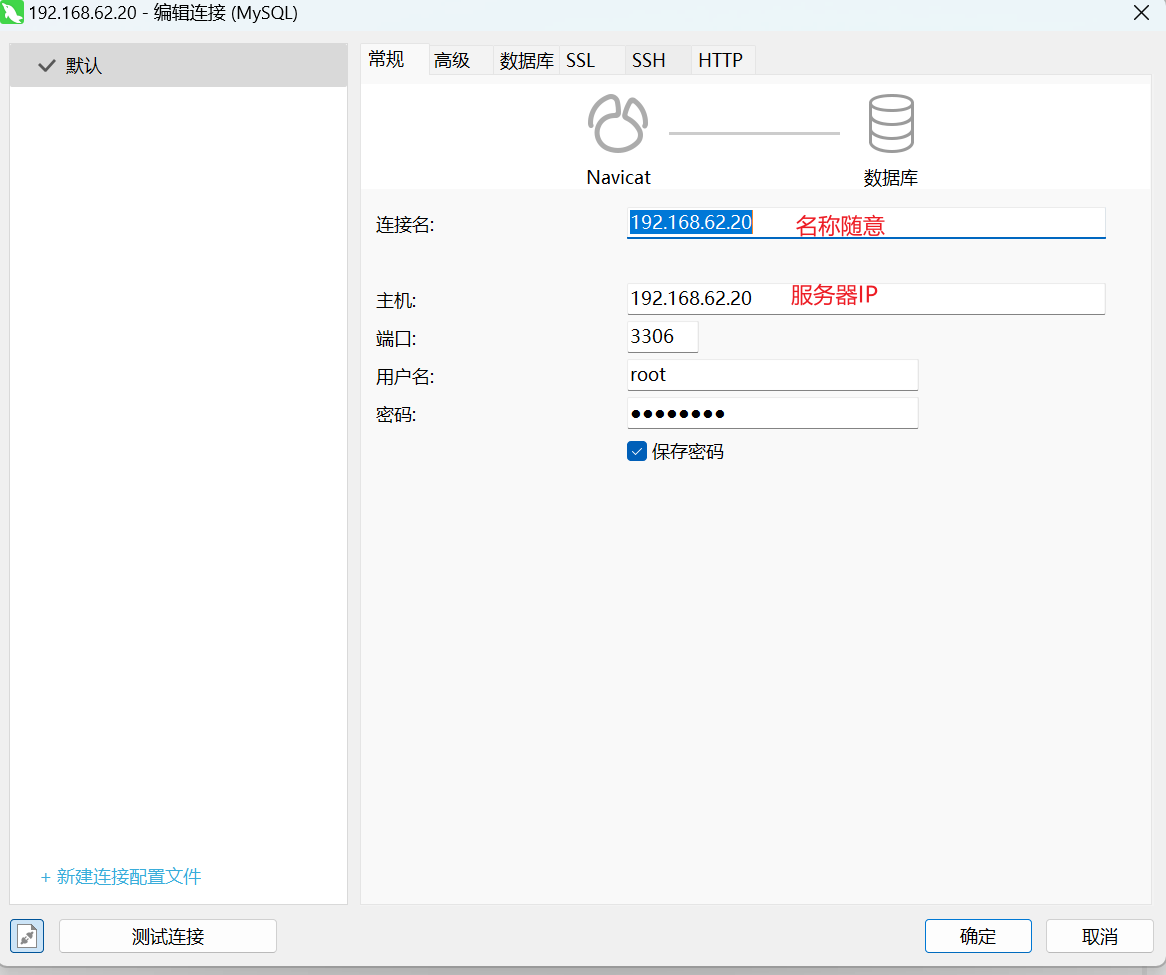
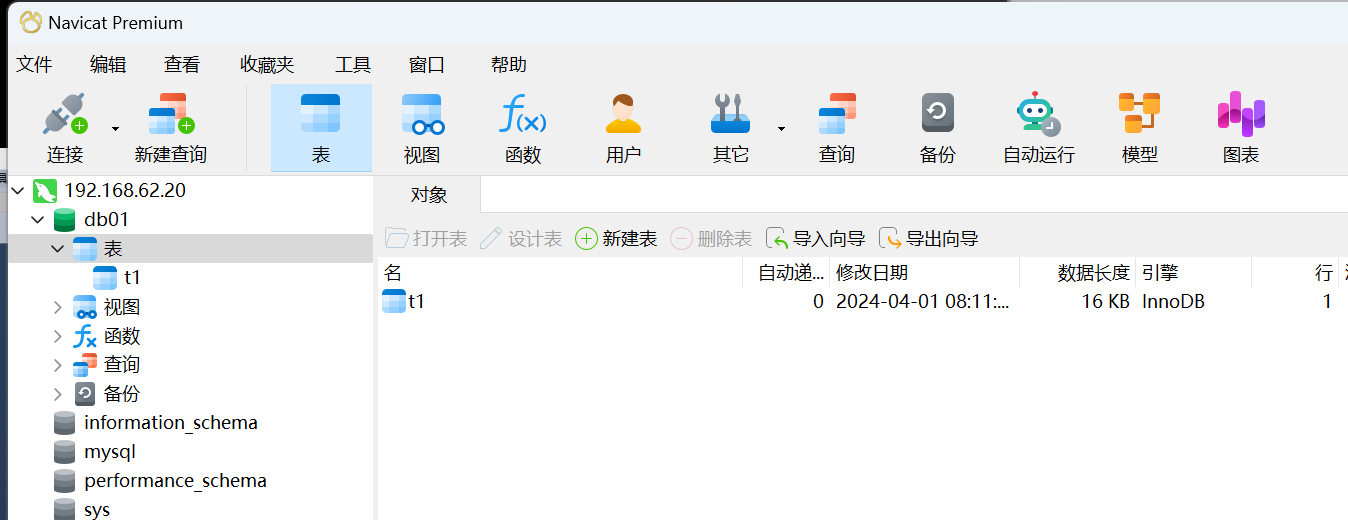
-
问题

docker 安装的Mysql 插入varchar类型字段为中文时会乱码,因为没有修正docker里mysql默认字符集
mysql> SHOW VARIABLES LIKE 'character%'; # latin 改为 utf8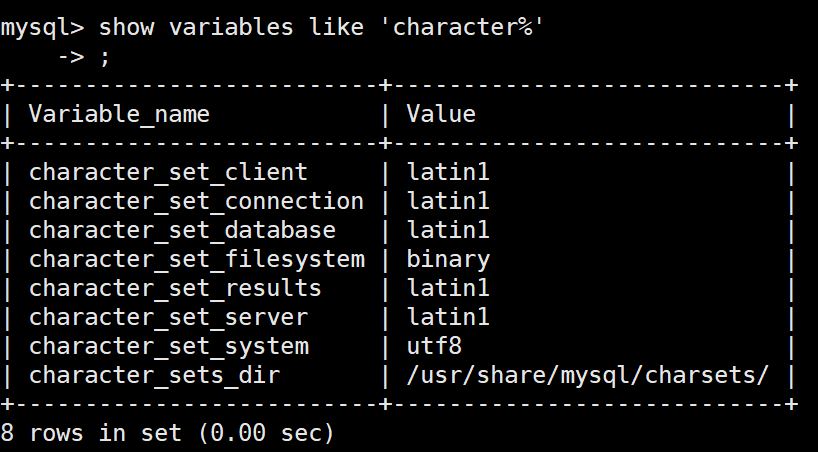
3. docker 安装MySQL——实战版
# 启动 配置MySQL的日志、数据、配置存放位置
docker run -d -p 3306:3306 --privileged=true
-v /tonkey/mysql/log:/var/log/mysql # 日志
-v /tonkey/mysql/data:/var/lib/mysql # 数据
-v /tonkey/mysql/conf:/etc/mysql/conf.d # 配置
-e MYSQL_ROOT_PASSWORD=123456 # 环境
--name tonkey_mysql # 名称
mysql:5.7 # 镜像:版本
# 复制该命令
docker run -d -p 3306:3306 --privileged=true -v /tonkey/mysql/log:/var/log/mysql -v /tonkey/mysql/data:/var/lib/mysql -v /tonkey/mysql/conf:/etc/mysql/conf.d -e MYSQL_ROOT_PASSWORD=123456 --name tonkey_mysql mysql:5.7解决docker 中 MySQL中文乱码问题
# 进入宿主机的 mysql 配置挂载位置
cd /tonkey/mysql/conf
创建 my.cnf 文件,并写入以下内容
[client]
default_character_set=utf8
[mysqld]
collation_server=utf8_general_ci
character_set_server=utf8
重启MySQL容器,并查看字符编码
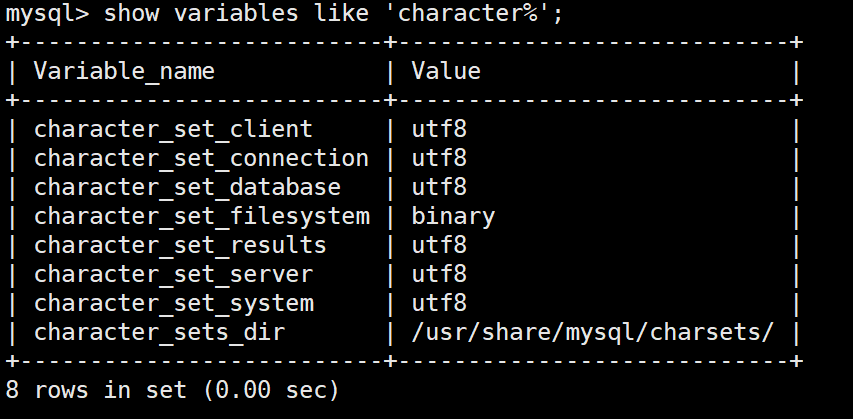
4. docker 安装Redis
拉取redis
docker pull redis:6.0.8
配置 redis.conf文件(在宿主机上自定义创建文件夹以便后面运行时挂载):
mkdir /tonkey/app/redis
cd /tonkey/app/redis
vim redis.conf
# Redis configuration file example.
#
# Note that in order to read the configuration file, Redis must be
# started with the file path as first argument:
#
# ./redis-server /path/to/redis.conf# Note on units: when memory size is needed, it is possible to specify
# it in the usual form of 1k 5GB 4M and so forth:
#
# 1k => 1000 bytes
# 1kb => 1024 bytes
# 1m => 1000000 bytes
# 1mb => 1024*1024 bytes
# 1g => 1000000000 bytes
# 1gb => 1024*1024*1024 bytes
#
# units are case insensitive so 1GB 1Gb 1gB are all the same.################################## INCLUDES #################################### Include one or more other config files here. This is useful if you
# have a standard template that goes to all Redis servers but also need
# to customize a few per-server settings. Include files can include
# other files, so use this wisely.
#
# Notice option "include" won't be rewritten by command "CONFIG REWRITE"
# from admin or Redis Sentinel. Since Redis always uses the last processed
# line as value of a configuration directive, you'd better put includes
# at the beginning of this file to avoid overwriting config change at runtime.
#
# If instead you are interested in using includes to override configuration
# options, it is better to use include as the last line.
#
# include /path/to/local.conf
# include /path/to/other.conf################################## MODULES ###################################### Load modules at startup. If the server is not able to load modules
# it will abort. It is possible to use multiple loadmodule directives.
#
# loadmodule /path/to/my_module.so
# loadmodule /path/to/other_module.so################################## NETWORK ###################################### By default, if no "bind" configuration directive is specified, Redis listens
# for connections from all the network interfaces available on the server.
# It is possible to listen to just one or multiple selected interfaces using
# the "bind" configuration directive, followed by one or more IP addresses.
#
# Examples:
#
# bind 192.168.1.100 10.0.0.1
# bind 127.0.0.1 ::1
#
# ~~~ WARNING ~~~ If the computer running Redis is directly exposed to the
# internet, binding to all the interfaces is dangerous and will expose the
# instance to everybody on the internet. So by default we uncomment the
# following bind directive, that will force Redis to listen only into
# the IPv4 loopback interface address (this means Redis will be able to
# accept connections only from clients running into the same computer it
# is running).
#
# IF YOU ARE SURE YOU WANT YOUR INSTANCE TO LISTEN TO ALL THE INTERFACES
# JUST COMMENT THE FOLLOWING LINE.
# ~~~~~~~~~~~~~~~~~~~~~~~~~~~~~~~~~~~~~~~~~~~~~~~~~~~~~~~~~~~~~~~~~~~~~~~~
#bind 127.0.0.1# Protected mode is a layer of security protection, in order to avoid that
# Redis instances left open on the internet are accessed and exploited.
#
# When protected mode is on and if:
#
# 1) The server is not binding explicitly to a set of addresses using the
# "bind" directive.
# 2) No password is configured.
#
# The server only accepts connections from clients connecting from the
# IPv4 and IPv6 loopback addresses 127.0.0.1 and ::1, and from Unix domain
# sockets.
#
# By default protected mode is enabled. You should disable it only if
# you are sure you want clients from other hosts to connect to Redis
# even if no authentication is configured, nor a specific set of interfaces
# are explicitly listed using the "bind" directive.
protected-mode no# Accept connections on the specified port, default is 6379 (IANA #815344).
# If port 0 is specified Redis will not listen on a TCP socket.
port 6379# TCP listen() backlog.
#
# In high requests-per-second environments you need an high backlog in order
# to avoid slow clients connections issues. Note that the Linux kernel
# will silently truncate it to the value of /proc/sys/net/core/somaxconn so
# make sure to raise both the value of somaxconn and tcp_max_syn_backlog
# in order to get the desired effect.
tcp-backlog 511# Unix socket.
#
# Specify the path for the Unix socket that will be used to listen for
# incoming connections. There is no default, so Redis will not listen
# on a unix socket when not specified.
#
# unixsocket /tmp/redis.sock
# unixsocketperm 700# Close the connection after a client is idle for N seconds (0 to disable)
timeout 0# TCP keepalive.
#
# If non-zero, use SO_KEEPALIVE to send TCP ACKs to clients in absence
# of communication. This is useful for two reasons:
#
# 1) Detect dead peers.
# 2) Take the connection alive from the point of view of network
# equipment in the middle.
#
# On Linux, the specified value (in seconds) is the period used to send ACKs.
# Note that to close the connection the double of the time is needed.
# On other kernels the period depends on the kernel configuration.
#
# A reasonable value for this option is 300 seconds, which is the new
# Redis default starting with Redis 3.2.1.
tcp-keepalive 300################################# GENERAL ###################################### By default Redis does not run as a daemon. Use 'yes' if you need it.
# Note that Redis will write a pid file in /var/run/redis.pid when daemonized.
daemonize no# If you run Redis from upstart or systemd, Redis can interact with your
# supervision tree. Options:
# supervised no - no supervision interaction
# supervised upstart - signal upstart by putting Redis into SIGSTOP mode
# supervised systemd - signal systemd by writing READY=1 to $NOTIFY_SOCKET
# supervised auto - detect upstart or systemd method based on
# UPSTART_JOB or NOTIFY_SOCKET environment variables
# Note: these supervision methods only signal "process is ready."
# They do not enable continuous liveness pings back to your supervisor.
supervised no# If a pid file is specified, Redis writes it where specified at startup
# and removes it at exit.
#
# When the server runs non daemonized, no pid file is created if none is
# specified in the configuration. When the server is daemonized, the pid file
# is used even if not specified, defaulting to "/var/run/redis.pid".
#
# Creating a pid file is best effort: if Redis is not able to create it
# nothing bad happens, the server will start and run normally.
pidfile /var/run/redis_6379.pid# Specify the server verbosity level.
# This can be one of:
# debug (a lot of information, useful for development/testing)
# verbose (many rarely useful info, but not a mess like the debug level)
# notice (moderately verbose, what you want in production probably)
# warning (only very important / critical messages are logged)
loglevel notice# Specify the log file name. Also the empty string can be used to force
# Redis to log on the standard output. Note that if you use standard
# output for logging but daemonize, logs will be sent to /dev/null
logfile ""# To enable logging to the system logger, just set 'syslog-enabled' to yes,
# and optionally update the other syslog parameters to suit your needs.
# syslog-enabled no# Specify the syslog identity.
# syslog-ident redis# Specify the syslog facility. Must be USER or between LOCAL0-LOCAL7.
# syslog-facility local0# Set the number of databases. The default database is DB 0, you can select
# a different one on a per-connection basis using SELECT <dbid> where
# dbid is a number between 0 and 'databases'-1
databases 16# By default Redis shows an ASCII art logo only when started to log to the
# standard output and if the standard output is a TTY. Basically this means
# that normally a logo is displayed only in interactive sessions.
#
# However it is possible to force the pre-4.0 behavior and always show a
# ASCII art logo in startup logs by setting the following option to yes.
always-show-logo yes################################ SNAPSHOTTING ################################
#
# Save the DB on disk:
#
# save <seconds> <changes>
#
# Will save the DB if both the given number of seconds and the given
# number of write operations against the DB occurred.
#
# In the example below the behaviour will be to save:
# after 900 sec (15 min) if at least 1 key changed
# after 300 sec (5 min) if at least 10 keys changed
# after 60 sec if at least 10000 keys changed
#
# Note: you can disable saving completely by commenting out all "save" lines.
#
# It is also possible to remove all the previously configured save
# points by adding a save directive with a single empty string argument
# like in the following example:
#
# save ""save 900 1
save 300 10
save 60 10000# By default Redis will stop accepting writes if RDB snapshots are enabled
# (at least one save point) and the latest background save failed.
# This will make the user aware (in a hard way) that data is not persisting
# on disk properly, otherwise chances are that no one will notice and some
# disaster will happen.
#
# If the background saving process will start working again Redis will
# automatically allow writes again.
#
# However if you have setup your proper monitoring of the Redis server
# and persistence, you may want to disable this feature so that Redis will
# continue to work as usual even if there are problems with disk,
# permissions, and so forth.
stop-writes-on-bgsave-error yes# Compress string objects using LZF when dump .rdb databases?
# For default that's set to 'yes' as it's almost always a win.
# If you want to save some CPU in the saving child set it to 'no' but
# the dataset will likely be bigger if you have compressible values or keys.
rdbcompression yes# Since version 5 of RDB a CRC64 checksum is placed at the end of the file.
# This makes the format more resistant to corruption but there is a performance
# hit to pay (around 10%) when saving and loading RDB files, so you can disable it
# for maximum performances.
#
# RDB files created with checksum disabled have a checksum of zero that will
# tell the loading code to skip the check.
rdbchecksum yes# The filename where to dump the DB
dbfilename dump.rdb# The working directory.
#
# The DB will be written inside this directory, with the filename specified
# above using the 'dbfilename' configuration directive.
#
# The Append Only File will also be created inside this directory.
#
# Note that you must specify a directory here, not a file name.
dir ./################################# REPLICATION ################################## Master-Replica replication. Use replicaof to make a Redis instance a copy of
# another Redis server. A few things to understand ASAP about Redis replication.
#
# +------------------+ +---------------+
# | Master | ---> | Replica |
# | (receive writes) | | (exact copy) |
# +------------------+ +---------------+
#
# 1) Redis replication is asynchronous, but you can configure a master to
# stop accepting writes if it appears to be not connected with at least
# a given number of replicas.
# 2) Redis replicas are able to perform a partial resynchronization with the
# master if the replication link is lost for a relatively small amount of
# time. You may want to configure the replication backlog size (see the next
# sections of this file) with a sensible value depending on your needs.
# 3) Replication is automatic and does not need user intervention. After a
# network partition replicas automatically try to reconnect to masters
# and resynchronize with them.
#
# replicaof <masterip> <masterport># If the master is password protected (using the "requirepass" configuration
# directive below) it is possible to tell the replica to authenticate before
# starting the replication synchronization process, otherwise the master will
# refuse the replica request.
#
# masterauth <master-password># When a replica loses its connection with the master, or when the replication
# is still in progress, the replica can act in two different ways:
#
# 1) if replica-serve-stale-data is set to 'yes' (the default) the replica will
# still reply to client requests, possibly with out of date data, or the
# data set may just be empty if this is the first synchronization.
#
# 2) if replica-serve-stale-data is set to 'no' the replica will reply with
# an error "SYNC with master in progress" to all the kind of commands
# but to INFO, replicaOF, AUTH, PING, SHUTDOWN, REPLCONF, ROLE, CONFIG,
# SUBSCRIBE, UNSUBSCRIBE, PSUBSCRIBE, PUNSUBSCRIBE, PUBLISH, PUBSUB,
# COMMAND, POST, HOST: and LATENCY.
#
replica-serve-stale-data yes# You can configure a replica instance to accept writes or not. Writing against
# a replica instance may be useful to store some ephemeral data (because data
# written on a replica will be easily deleted after resync with the master) but
# may also cause problems if clients are writing to it because of a
# misconfiguration.
#
# Since Redis 2.6 by default replicas are read-only.
#
# Note: read only replicas are not designed to be exposed to untrusted clients
# on the internet. It's just a protection layer against misuse of the instance.
# Still a read only replica exports by default all the administrative commands
# such as CONFIG, DEBUG, and so forth. To a limited extent you can improve
# security of read only replicas using 'rename-command' to shadow all the
# administrative / dangerous commands.
replica-read-only yes# Replication SYNC strategy: disk or socket.
#
# -------------------------------------------------------
# WARNING: DISKLESS REPLICATION IS EXPERIMENTAL CURRENTLY
# -------------------------------------------------------
#
# New replicas and reconnecting replicas that are not able to continue the replication
# process just receiving differences, need to do what is called a "full
# synchronization". An RDB file is transmitted from the master to the replicas.
# The transmission can happen in two different ways:
#
# 1) Disk-backed: The Redis master creates a new process that writes the RDB
# file on disk. Later the file is transferred by the parent
# process to the replicas incrementally.
# 2) Diskless: The Redis master creates a new process that directly writes the
# RDB file to replica sockets, without touching the disk at all.
#
# With disk-backed replication, while the RDB file is generated, more replicas
# can be queued and served with the RDB file as soon as the current child producing
# the RDB file finishes its work. With diskless replication instead once
# the transfer starts, new replicas arriving will be queued and a new transfer
# will start when the current one terminates.
#
# When diskless replication is used, the master waits a configurable amount of
# time (in seconds) before starting the transfer in the hope that multiple replicas
# will arrive and the transfer can be parallelized.
#
# With slow disks and fast (large bandwidth) networks, diskless replication
# works better.
repl-diskless-sync no# When diskless replication is enabled, it is possible to configure the delay
# the server waits in order to spawn the child that transfers the RDB via socket
# to the replicas.
#
# This is important since once the transfer starts, it is not possible to serve
# new replicas arriving, that will be queued for the next RDB transfer, so the server
# waits a delay in order to let more replicas arrive.
#
# The delay is specified in seconds, and by default is 5 seconds. To disable
# it entirely just set it to 0 seconds and the transfer will start ASAP.
repl-diskless-sync-delay 5# Replicas send PINGs to server in a predefined interval. It's possible to change
# this interval with the repl_ping_replica_period option. The default value is 10
# seconds.
#
# repl-ping-replica-period 10# The following option sets the replication timeout for:
#
# 1) Bulk transfer I/O during SYNC, from the point of view of replica.
# 2) Master timeout from the point of view of replicas (data, pings).
# 3) Replica timeout from the point of view of masters (REPLCONF ACK pings).
#
# It is important to make sure that this value is greater than the value
# specified for repl-ping-replica-period otherwise a timeout will be detected
# every time there is low traffic between the master and the replica.
#
# repl-timeout 60# Disable TCP_NODELAY on the replica socket after SYNC?
#
# If you select "yes" Redis will use a smaller number of TCP packets and
# less bandwidth to send data to replicas. But this can add a delay for
# the data to appear on the replica side, up to 40 milliseconds with
# Linux kernels using a default configuration.
#
# If you select "no" the delay for data to appear on the replica side will
# be reduced but more bandwidth will be used for replication.
#
# By default we optimize for low latency, but in very high traffic conditions
# or when the master and replicas are many hops away, turning this to "yes" may
# be a good idea.
repl-disable-tcp-nodelay no# Set the replication backlog size. The backlog is a buffer that accumulates
# replica data when replicas are disconnected for some time, so that when a replica
# wants to reconnect again, often a full resync is not needed, but a partial
# resync is enough, just passing the portion of data the replica missed while
# disconnected.
#
# The bigger the replication backlog, the longer the time the replica can be
# disconnected and later be able to perform a partial resynchronization.
#
# The backlog is only allocated once there is at least a replica connected.
#
# repl-backlog-size 1mb# After a master has no longer connected replicas for some time, the backlog
# will be freed. The following option configures the amount of seconds that
# need to elapse, starting from the time the last replica disconnected, for
# the backlog buffer to be freed.
#
# Note that replicas never free the backlog for timeout, since they may be
# promoted to masters later, and should be able to correctly "partially
# resynchronize" with the replicas: hence they should always accumulate backlog.
#
# A value of 0 means to never release the backlog.
#
# repl-backlog-ttl 3600# The replica priority is an integer number published by Redis in the INFO output.
# It is used by Redis Sentinel in order to select a replica to promote into a
# master if the master is no longer working correctly.
#
# A replica with a low priority number is considered better for promotion, so
# for instance if there are three replicas with priority 10, 100, 25 Sentinel will
# pick the one with priority 10, that is the lowest.
#
# However a special priority of 0 marks the replica as not able to perform the
# role of master, so a replica with priority of 0 will never be selected by
# Redis Sentinel for promotion.
#
# By default the priority is 100.
replica-priority 100# It is possible for a master to stop accepting writes if there are less than
# N replicas connected, having a lag less or equal than M seconds.
#
# The N replicas need to be in "online" state.
#
# The lag in seconds, that must be <= the specified value, is calculated from
# the last ping received from the replica, that is usually sent every second.
#
# This option does not GUARANTEE that N replicas will accept the write, but
# will limit the window of exposure for lost writes in case not enough replicas
# are available, to the specified number of seconds.
#
# For example to require at least 3 replicas with a lag <= 10 seconds use:
#
# min-replicas-to-write 3
# min-replicas-max-lag 10
#
# Setting one or the other to 0 disables the feature.
#
# By default min-replicas-to-write is set to 0 (feature disabled) and
# min-replicas-max-lag is set to 10.# A Redis master is able to list the address and port of the attached
# replicas in different ways. For example the "INFO replication" section
# offers this information, which is used, among other tools, by
# Redis Sentinel in order to discover replica instances.
# Another place where this info is available is in the output of the
# "ROLE" command of a master.
#
# The listed IP and address normally reported by a replica is obtained
# in the following way:
#
# IP: The address is auto detected by checking the peer address
# of the socket used by the replica to connect with the master.
#
# Port: The port is communicated by the replica during the replication
# handshake, and is normally the port that the replica is using to
# listen for connections.
#
# However when port forwarding or Network Address Translation (NAT) is
# used, the replica may be actually reachable via different IP and port
# pairs. The following two options can be used by a replica in order to
# report to its master a specific set of IP and port, so that both INFO
# and ROLE will report those values.
#
# There is no need to use both the options if you need to override just
# the port or the IP address.
#
# replica-announce-ip 5.5.5.5
# replica-announce-port 1234################################## SECURITY #################################### Require clients to issue AUTH <PASSWORD> before processing any other
# commands. This might be useful in environments in which you do not trust
# others with access to the host running redis-server.
#
# This should stay commented out for backward compatibility and because most
# people do not need auth (e.g. they run their own servers).
#
# Warning: since Redis is pretty fast an outside user can try up to
# 150k passwords per second against a good box. This means that you should
# use a very strong password otherwise it will be very easy to break.
#
# requirepass foobared# Command renaming.
#
# It is possible to change the name of dangerous commands in a shared
# environment. For instance the CONFIG command may be renamed into something
# hard to guess so that it will still be available for internal-use tools
# but not available for general clients.
#
# Example:
#
# rename-command CONFIG b840fc02d524045429941cc15f59e41cb7be6c52
#
# It is also possible to completely kill a command by renaming it into
# an empty string:
#
# rename-command CONFIG ""
#
# Please note that changing the name of commands that are logged into the
# AOF file or transmitted to replicas may cause problems.################################### CLIENTS ##################################### Set the max number of connected clients at the same time. By default
# this limit is set to 10000 clients, however if the Redis server is not
# able to configure the process file limit to allow for the specified limit
# the max number of allowed clients is set to the current file limit
# minus 32 (as Redis reserves a few file descriptors for internal uses).
#
# Once the limit is reached Redis will close all the new connections sending
# an error 'max number of clients reached'.
#
# maxclients 10000############################## MEMORY MANAGEMENT ################################# Set a memory usage limit to the specified amount of bytes.
# When the memory limit is reached Redis will try to remove keys
# according to the eviction policy selected (see maxmemory-policy).
#
# If Redis can't remove keys according to the policy, or if the policy is
# set to 'noeviction', Redis will start to reply with errors to commands
# that would use more memory, like SET, LPUSH, and so on, and will continue
# to reply to read-only commands like GET.
#
# This option is usually useful when using Redis as an LRU or LFU cache, or to
# set a hard memory limit for an instance (using the 'noeviction' policy).
#
# WARNING: If you have replicas attached to an instance with maxmemory on,
# the size of the output buffers needed to feed the replicas are subtracted
# from the used memory count, so that network problems / resyncs will
# not trigger a loop where keys are evicted, and in turn the output
# buffer of replicas is full with DELs of keys evicted triggering the deletion
# of more keys, and so forth until the database is completely emptied.
#
# In short... if you have replicas attached it is suggested that you set a lower
# limit for maxmemory so that there is some free RAM on the system for replica
# output buffers (but this is not needed if the policy is 'noeviction').
#
# maxmemory <bytes># MAXMEMORY POLICY: how Redis will select what to remove when maxmemory
# is reached. You can select among five behaviors:
#
# volatile-lru -> Evict using approximated LRU among the keys with an expire set.
# allkeys-lru -> Evict any key using approximated LRU.
# volatile-lfu -> Evict using approximated LFU among the keys with an expire set.
# allkeys-lfu -> Evict any key using approximated LFU.
# volatile-random -> Remove a random key among the ones with an expire set.
# allkeys-random -> Remove a random key, any key.
# volatile-ttl -> Remove the key with the nearest expire time (minor TTL)
# noeviction -> Don't evict anything, just return an error on write operations.
#
# LRU means Least Recently Used
# LFU means Least Frequently Used
#
# Both LRU, LFU and volatile-ttl are implemented using approximated
# randomized algorithms.
#
# Note: with any of the above policies, Redis will return an error on write
# operations, when there are no suitable keys for eviction.
#
# At the date of writing these commands are: set setnx setex append
# incr decr rpush lpush rpushx lpushx linsert lset rpoplpush sadd
# sinter sinterstore sunion sunionstore sdiff sdiffstore zadd zincrby
# zunionstore zinterstore hset hsetnx hmset hincrby incrby decrby
# getset mset msetnx exec sort
#
# The default is:
#
# maxmemory-policy noeviction# LRU, LFU and minimal TTL algorithms are not precise algorithms but approximated
# algorithms (in order to save memory), so you can tune it for speed or
# accuracy. For default Redis will check five keys and pick the one that was
# used less recently, you can change the sample size using the following
# configuration directive.
#
# The default of 5 produces good enough results. 10 Approximates very closely
# true LRU but costs more CPU. 3 is faster but not very accurate.
#
# maxmemory-samples 5# Starting from Redis 5, by default a replica will ignore its maxmemory setting
# (unless it is promoted to master after a failover or manually). It means
# that the eviction of keys will be just handled by the master, sending the
# DEL commands to the replica as keys evict in the master side.
#
# This behavior ensures that masters and replicas stay consistent, and is usually
# what you want, however if your replica is writable, or you want the replica to have
# a different memory setting, and you are sure all the writes performed to the
# replica are idempotent, then you may change this default (but be sure to understand
# what you are doing).
#
# Note that since the replica by default does not evict, it may end using more
# memory than the one set via maxmemory (there are certain buffers that may
# be larger on the replica, or data structures may sometimes take more memory and so
# forth). So make sure you monitor your replicas and make sure they have enough
# memory to never hit a real out-of-memory condition before the master hits
# the configured maxmemory setting.
#
# replica-ignore-maxmemory yes############################# LAZY FREEING ##################################### Redis has two primitives to delete keys. One is called DEL and is a blocking
# deletion of the object. It means that the server stops processing new commands
# in order to reclaim all the memory associated with an object in a synchronous
# way. If the key deleted is associated with a small object, the time needed
# in order to execute the DEL command is very small and comparable to most other
# O(1) or O(log_N) commands in Redis. However if the key is associated with an
# aggregated value containing millions of elements, the server can block for
# a long time (even seconds) in order to complete the operation.
#
# For the above reasons Redis also offers non blocking deletion primitives
# such as UNLINK (non blocking DEL) and the ASYNC option of FLUSHALL and
# FLUSHDB commands, in order to reclaim memory in background. Those commands
# are executed in constant time. Another thread will incrementally free the
# object in the background as fast as possible.
#
# DEL, UNLINK and ASYNC option of FLUSHALL and FLUSHDB are user-controlled.
# It's up to the design of the application to understand when it is a good
# idea to use one or the other. However the Redis server sometimes has to
# delete keys or flush the whole database as a side effect of other operations.
# Specifically Redis deletes objects independently of a user call in the
# following scenarios:
#
# 1) On eviction, because of the maxmemory and maxmemory policy configurations,
# in order to make room for new data, without going over the specified
# memory limit.
# 2) Because of expire: when a key with an associated time to live (see the
# EXPIRE command) must be deleted from memory.
# 3) Because of a side effect of a command that stores data on a key that may
# already exist. For example the RENAME command may delete the old key
# content when it is replaced with another one. Similarly SUNIONSTORE
# or SORT with STORE option may delete existing keys. The SET command
# itself removes any old content of the specified key in order to replace
# it with the specified string.
# 4) During replication, when a replica performs a full resynchronization with
# its master, the content of the whole database is removed in order to
# load the RDB file just transferred.
#
# In all the above cases the default is to delete objects in a blocking way,
# like if DEL was called. However you can configure each case specifically
# in order to instead release memory in a non-blocking way like if UNLINK
# was called, using the following configuration directives:lazyfree-lazy-eviction no
lazyfree-lazy-expire no
lazyfree-lazy-server-del no
replica-lazy-flush no############################## APPEND ONLY MODE ################################ By default Redis asynchronously dumps the dataset on disk. This mode is
# good enough in many applications, but an issue with the Redis process or
# a power outage may result into a few minutes of writes lost (depending on
# the configured save points).
#
# The Append Only File is an alternative persistence mode that provides
# much better durability. For instance using the default data fsync policy
# (see later in the config file) Redis can lose just one second of writes in a
# dramatic event like a server power outage, or a single write if something
# wrong with the Redis process itself happens, but the operating system is
# still running correctly.
#
# AOF and RDB persistence can be enabled at the same time without problems.
# If the AOF is enabled on startup Redis will load the AOF, that is the file
# with the better durability guarantees.
#
# Please check http://redis.io/topics/persistence for more information.appendonly no# The name of the append only file (default: "appendonly.aof")appendfilename "appendonly.aof"# The fsync() call tells the Operating System to actually write data on disk
# instead of waiting for more data in the output buffer. Some OS will really flush
# data on disk, some other OS will just try to do it ASAP.
#
# Redis supports three different modes:
#
# no: don't fsync, just let the OS flush the data when it wants. Faster.
# always: fsync after every write to the append only log. Slow, Safest.
# everysec: fsync only one time every second. Compromise.
#
# The default is "everysec", as that's usually the right compromise between
# speed and data safety. It's up to you to understand if you can relax this to
# "no" that will let the operating system flush the output buffer when
# it wants, for better performances (but if you can live with the idea of
# some data loss consider the default persistence mode that's snapshotting),
# or on the contrary, use "always" that's very slow but a bit safer than
# everysec.
#
# More details please check the following article:
# http://antirez.com/post/redis-persistence-demystified.html
#
# If unsure, use "everysec".# appendfsync always
appendfsync everysec
# appendfsync no# When the AOF fsync policy is set to always or everysec, and a background
# saving process (a background save or AOF log background rewriting) is
# performing a lot of I/O against the disk, in some Linux configurations
# Redis may block too long on the fsync() call. Note that there is no fix for
# this currently, as even performing fsync in a different thread will block
# our synchronous write(2) call.
#
# In order to mitigate this problem it's possible to use the following option
# that will prevent fsync() from being called in the main process while a
# BGSAVE or BGREWRITEAOF is in progress.
#
# This means that while another child is saving, the durability of Redis is
# the same as "appendfsync none". In practical terms, this means that it is
# possible to lose up to 30 seconds of log in the worst scenario (with the
# default Linux settings).
#
# If you have latency problems turn this to "yes". Otherwise leave it as
# "no" that is the safest pick from the point of view of durability.no-appendfsync-on-rewrite no# Automatic rewrite of the append only file.
# Redis is able to automatically rewrite the log file implicitly calling
# BGREWRITEAOF when the AOF log size grows by the specified percentage.
#
# This is how it works: Redis remembers the size of the AOF file after the
# latest rewrite (if no rewrite has happened since the restart, the size of
# the AOF at startup is used).
#
# This base size is compared to the current size. If the current size is
# bigger than the specified percentage, the rewrite is triggered. Also
# you need to specify a minimal size for the AOF file to be rewritten, this
# is useful to avoid rewriting the AOF file even if the percentage increase
# is reached but it is still pretty small.
#
# Specify a percentage of zero in order to disable the automatic AOF
# rewrite feature.auto-aof-rewrite-percentage 100
auto-aof-rewrite-min-size 64mb# An AOF file may be found to be truncated at the end during the Redis
# startup process, when the AOF data gets loaded back into memory.
# This may happen when the system where Redis is running
# crashes, especially when an ext4 filesystem is mounted without the
# data=ordered option (however this can't happen when Redis itself
# crashes or aborts but the operating system still works correctly).
#
# Redis can either exit with an error when this happens, or load as much
# data as possible (the default now) and start if the AOF file is found
# to be truncated at the end. The following option controls this behavior.
#
# If aof-load-truncated is set to yes, a truncated AOF file is loaded and
# the Redis server starts emitting a log to inform the user of the event.
# Otherwise if the option is set to no, the server aborts with an error
# and refuses to start. When the option is set to no, the user requires
# to fix the AOF file using the "redis-check-aof" utility before to restart
# the server.
#
# Note that if the AOF file will be found to be corrupted in the middle
# the server will still exit with an error. This option only applies when
# Redis will try to read more data from the AOF file but not enough bytes
# will be found.
aof-load-truncated yes# When rewriting the AOF file, Redis is able to use an RDB preamble in the
# AOF file for faster rewrites and recoveries. When this option is turned
# on the rewritten AOF file is composed of two different stanzas:
#
# [RDB file][AOF tail]
#
# When loading Redis recognizes that the AOF file starts with the "REDIS"
# string and loads the prefixed RDB file, and continues loading the AOF
# tail.
aof-use-rdb-preamble yes################################ LUA SCRIPTING ################################ Max execution time of a Lua script in milliseconds.
#
# If the maximum execution time is reached Redis will log that a script is
# still in execution after the maximum allowed time and will start to
# reply to queries with an error.
#
# When a long running script exceeds the maximum execution time only the
# SCRIPT KILL and SHUTDOWN NOSAVE commands are available. The first can be
# used to stop a script that did not yet called write commands. The second
# is the only way to shut down the server in the case a write command was
# already issued by the script but the user doesn't want to wait for the natural
# termination of the script.
#
# Set it to 0 or a negative value for unlimited execution without warnings.
lua-time-limit 5000################################ REDIS CLUSTER ################################ Normal Redis instances can't be part of a Redis Cluster; only nodes that are
# started as cluster nodes can. In order to start a Redis instance as a
# cluster node enable the cluster support uncommenting the following:
#
# cluster-enabled yes# Every cluster node has a cluster configuration file. This file is not
# intended to be edited by hand. It is created and updated by Redis nodes.
# Every Redis Cluster node requires a different cluster configuration file.
# Make sure that instances running in the same system do not have
# overlapping cluster configuration file names.
#
# cluster-config-file nodes-6379.conf# Cluster node timeout is the amount of milliseconds a node must be unreachable
# for it to be considered in failure state.
# Most other internal time limits are multiple of the node timeout.
#
# cluster-node-timeout 15000# A replica of a failing master will avoid to start a failover if its data
# looks too old.
#
# There is no simple way for a replica to actually have an exact measure of
# its "data age", so the following two checks are performed:
#
# 1) If there are multiple replicas able to failover, they exchange messages
# in order to try to give an advantage to the replica with the best
# replication offset (more data from the master processed).
# Replicas will try to get their rank by offset, and apply to the start
# of the failover a delay proportional to their rank.
#
# 2) Every single replica computes the time of the last interaction with
# its master. This can be the last ping or command received (if the master
# is still in the "connected" state), or the time that elapsed since the
# disconnection with the master (if the replication link is currently down).
# If the last interaction is too old, the replica will not try to failover
# at all.
#
# The point "2" can be tuned by user. Specifically a replica will not perform
# the failover if, since the last interaction with the master, the time
# elapsed is greater than:
#
# (node-timeout * replica-validity-factor) + repl-ping-replica-period
#
# So for example if node-timeout is 30 seconds, and the replica-validity-factor
# is 10, and assuming a default repl-ping-replica-period of 10 seconds, the
# replica will not try to failover if it was not able to talk with the master
# for longer than 310 seconds.
#
# A large replica-validity-factor may allow replicas with too old data to failover
# a master, while a too small value may prevent the cluster from being able to
# elect a replica at all.
#
# For maximum availability, it is possible to set the replica-validity-factor
# to a value of 0, which means, that replicas will always try to failover the
# master regardless of the last time they interacted with the master.
# (However they'll always try to apply a delay proportional to their
# offset rank).
#
# Zero is the only value able to guarantee that when all the partitions heal
# the cluster will always be able to continue.
#
# cluster-replica-validity-factor 10# Cluster replicas are able to migrate to orphaned masters, that are masters
# that are left without working replicas. This improves the cluster ability
# to resist to failures as otherwise an orphaned master can't be failed over
# in case of failure if it has no working replicas.
#
# Replicas migrate to orphaned masters only if there are still at least a
# given number of other working replicas for their old master. This number
# is the "migration barrier". A migration barrier of 1 means that a replica
# will migrate only if there is at least 1 other working replica for its master
# and so forth. It usually reflects the number of replicas you want for every
# master in your cluster.
#
# Default is 1 (replicas migrate only if their masters remain with at least
# one replica). To disable migration just set it to a very large value.
# A value of 0 can be set but is useful only for debugging and dangerous
# in production.
#
# cluster-migration-barrier 1# By default Redis Cluster nodes stop accepting queries if they detect there
# is at least an hash slot uncovered (no available node is serving it).
# This way if the cluster is partially down (for example a range of hash slots
# are no longer covered) all the cluster becomes, eventually, unavailable.
# It automatically returns available as soon as all the slots are covered again.
#
# However sometimes you want the subset of the cluster which is working,
# to continue to accept queries for the part of the key space that is still
# covered. In order to do so, just set the cluster-require-full-coverage
# option to no.
#
# cluster-require-full-coverage yes# This option, when set to yes, prevents replicas from trying to failover its
# master during master failures. However the master can still perform a
# manual failover, if forced to do so.
#
# This is useful in different scenarios, especially in the case of multiple
# data center operations, where we want one side to never be promoted if not
# in the case of a total DC failure.
#
# cluster-replica-no-failover no# In order to setup your cluster make sure to read the documentation
# available at http://redis.io web site.########################## CLUSTER DOCKER/NAT support ######################### In certain deployments, Redis Cluster nodes address discovery fails, because
# addresses are NAT-ted or because ports are forwarded (the typical case is
# Docker and other containers).
#
# In order to make Redis Cluster working in such environments, a static
# configuration where each node knows its public address is needed. The
# following two options are used for this scope, and are:
#
# * cluster-announce-ip
# * cluster-announce-port
# * cluster-announce-bus-port
#
# Each instruct the node about its address, client port, and cluster message
# bus port. The information is then published in the header of the bus packets
# so that other nodes will be able to correctly map the address of the node
# publishing the information.
#
# If the above options are not used, the normal Redis Cluster auto-detection
# will be used instead.
#
# Note that when remapped, the bus port may not be at the fixed offset of
# clients port + 10000, so you can specify any port and bus-port depending
# on how they get remapped. If the bus-port is not set, a fixed offset of
# 10000 will be used as usually.
#
# Example:
#
# cluster-announce-ip 10.1.1.5
# cluster-announce-port 6379
# cluster-announce-bus-port 6380################################## SLOW LOG #################################### The Redis Slow Log is a system to log queries that exceeded a specified
# execution time. The execution time does not include the I/O operations
# like talking with the client, sending the reply and so forth,
# but just the time needed to actually execute the command (this is the only
# stage of command execution where the thread is blocked and can not serve
# other requests in the meantime).
#
# You can configure the slow log with two parameters: one tells Redis
# what is the execution time, in microseconds, to exceed in order for the
# command to get logged, and the other parameter is the length of the
# slow log. When a new command is logged the oldest one is removed from the
# queue of logged commands.# The following time is expressed in microseconds, so 1000000 is equivalent
# to one second. Note that a negative number disables the slow log, while
# a value of zero forces the logging of every command.
slowlog-log-slower-than 10000# There is no limit to this length. Just be aware that it will consume memory.
# You can reclaim memory used by the slow log with SLOWLOG RESET.
slowlog-max-len 128################################ LATENCY MONITOR ############################### The Redis latency monitoring subsystem samples different operations
# at runtime in order to collect data related to possible sources of
# latency of a Redis instance.
#
# Via the LATENCY command this information is available to the user that can
# print graphs and obtain reports.
#
# The system only logs operations that were performed in a time equal or
# greater than the amount of milliseconds specified via the
# latency-monitor-threshold configuration directive. When its value is set
# to zero, the latency monitor is turned off.
#
# By default latency monitoring is disabled since it is mostly not needed
# if you don't have latency issues, and collecting data has a performance
# impact, that while very small, can be measured under big load. Latency
# monitoring can easily be enabled at runtime using the command
# "CONFIG SET latency-monitor-threshold <milliseconds>" if needed.
latency-monitor-threshold 0############################# EVENT NOTIFICATION ############################### Redis can notify Pub/Sub clients about events happening in the key space.
# This feature is documented at http://redis.io/topics/notifications
#
# For instance if keyspace events notification is enabled, and a client
# performs a DEL operation on key "foo" stored in the Database 0, two
# messages will be published via Pub/Sub:
#
# PUBLISH __keyspace@0__:foo del
# PUBLISH __keyevent@0__:del foo
#
# It is possible to select the events that Redis will notify among a set
# of classes. Every class is identified by a single character:
#
# K Keyspace events, published with __keyspace@<db>__ prefix.
# E Keyevent events, published with __keyevent@<db>__ prefix.
# g Generic commands (non-type specific) like DEL, EXPIRE, RENAME, ...
# $ String commands
# l List commands
# s Set commands
# h Hash commands
# z Sorted set commands
# x Expired events (events generated every time a key expires)
# e Evicted events (events generated when a key is evicted for maxmemory)
# A Alias for g$lshzxe, so that the "AKE" string means all the events.
#
# The "notify-keyspace-events" takes as argument a string that is composed
# of zero or multiple characters. The empty string means that notifications
# are disabled.
#
# Example: to enable list and generic events, from the point of view of the
# event name, use:
#
# notify-keyspace-events Elg
#
# Example 2: to get the stream of the expired keys subscribing to channel
# name __keyevent@0__:expired use:
#notify-keyspace-events Ex
#
# By default all notifications are disabled because most users don't need
# this feature and the feature has some overhead. Note that if you don't
# specify at least one of K or E, no events will be delivered.
#notify-keyspace-events ""############################### ADVANCED CONFIG ################################ Hashes are encoded using a memory efficient data structure when they have a
# small number of entries, and the biggest entry does not exceed a given
# threshold. These thresholds can be configured using the following directives.
hash-max-ziplist-entries 512
hash-max-ziplist-value 64# Lists are also encoded in a special way to save a lot of space.
# The number of entries allowed per internal list node can be specified
# as a fixed maximum size or a maximum number of elements.
# For a fixed maximum size, use -5 through -1, meaning:
# -5: max size: 64 Kb <-- not recommended for normal workloads
# -4: max size: 32 Kb <-- not recommended
# -3: max size: 16 Kb <-- probably not recommended
# -2: max size: 8 Kb <-- good
# -1: max size: 4 Kb <-- good
# Positive numbers mean store up to _exactly_ that number of elements
# per list node.
# The highest performing option is usually -2 (8 Kb size) or -1 (4 Kb size),
# but if your use case is unique, adjust the settings as necessary.
list-max-ziplist-size -2# Lists may also be compressed.
# Compress depth is the number of quicklist ziplist nodes from *each* side of
# the list to *exclude* from compression. The head and tail of the list
# are always uncompressed for fast push/pop operations. Settings are:
# 0: disable all list compression
# 1: depth 1 means "don't start compressing until after 1 node into the list,
# going from either the head or tail"
# So: [head]->node->node->...->node->[tail]
# [head], [tail] will always be uncompressed; inner nodes will compress.
# 2: [head]->[next]->node->node->...->node->[prev]->[tail]
# 2 here means: don't compress head or head->next or tail->prev or tail,
# but compress all nodes between them.
# 3: [head]->[next]->[next]->node->node->...->node->[prev]->[prev]->[tail]
# etc.
list-compress-depth 0# Sets have a special encoding in just one case: when a set is composed
# of just strings that happen to be integers in radix 10 in the range
# of 64 bit signed integers.
# The following configuration setting sets the limit in the size of the
# set in order to use this special memory saving encoding.
set-max-intset-entries 512# Similarly to hashes and lists, sorted sets are also specially encoded in
# order to save a lot of space. This encoding is only used when the length and
# elements of a sorted set are below the following limits:
zset-max-ziplist-entries 128
zset-max-ziplist-value 64# HyperLogLog sparse representation bytes limit. The limit includes the
# 16 bytes header. When an HyperLogLog using the sparse representation crosses
# this limit, it is converted into the dense representation.
#
# A value greater than 16000 is totally useless, since at that point the
# dense representation is more memory efficient.
#
# The suggested value is ~ 3000 in order to have the benefits of
# the space efficient encoding without slowing down too much PFADD,
# which is O(N) with the sparse encoding. The value can be raised to
# ~ 10000 when CPU is not a concern, but space is, and the data set is
# composed of many HyperLogLogs with cardinality in the 0 - 15000 range.
hll-sparse-max-bytes 3000# Streams macro node max size / items. The stream data structure is a radix
# tree of big nodes that encode multiple items inside. Using this configuration
# it is possible to configure how big a single node can be in bytes, and the
# maximum number of items it may contain before switching to a new node when
# appending new stream entries. If any of the following settings are set to
# zero, the limit is ignored, so for instance it is possible to set just a
# max entires limit by setting max-bytes to 0 and max-entries to the desired
# value.
stream-node-max-bytes 4096
stream-node-max-entries 100# Active rehashing uses 1 millisecond every 100 milliseconds of CPU time in
# order to help rehashing the main Redis hash table (the one mapping top-level
# keys to values). The hash table implementation Redis uses (see dict.c)
# performs a lazy rehashing: the more operation you run into a hash table
# that is rehashing, the more rehashing "steps" are performed, so if the
# server is idle the rehashing is never complete and some more memory is used
# by the hash table.
#
# The default is to use this millisecond 10 times every second in order to
# actively rehash the main dictionaries, freeing memory when possible.
#
# If unsure:
# use "activerehashing no" if you have hard latency requirements and it is
# not a good thing in your environment that Redis can reply from time to time
# to queries with 2 milliseconds delay.
#
# use "activerehashing yes" if you don't have such hard requirements but
# want to free memory asap when possible.
activerehashing yes# The client output buffer limits can be used to force disconnection of clients
# that are not reading data from the server fast enough for some reason (a
# common reason is that a Pub/Sub client can't consume messages as fast as the
# publisher can produce them).
#
# The limit can be set differently for the three different classes of clients:
#
# normal -> normal clients including MONITOR clients
# replica -> replica clients
# pubsub -> clients subscribed to at least one pubsub channel or pattern
#
# The syntax of every client-output-buffer-limit directive is the following:
#
# client-output-buffer-limit <class> <hard limit> <soft limit> <soft seconds>
#
# A client is immediately disconnected once the hard limit is reached, or if
# the soft limit is reached and remains reached for the specified number of
# seconds (continuously).
# So for instance if the hard limit is 32 megabytes and the soft limit is
# 16 megabytes / 10 seconds, the client will get disconnected immediately
# if the size of the output buffers reach 32 megabytes, but will also get
# disconnected if the client reaches 16 megabytes and continuously overcomes
# the limit for 10 seconds.
#
# By default normal clients are not limited because they don't receive data
# without asking (in a push way), but just after a request, so only
# asynchronous clients may create a scenario where data is requested faster
# than it can read.
#
# Instead there is a default limit for pubsub and replica clients, since
# subscribers and replicas receive data in a push fashion.
#
# Both the hard or the soft limit can be disabled by setting them to zero.
client-output-buffer-limit normal 0 0 0
client-output-buffer-limit replica 256mb 64mb 60
client-output-buffer-limit pubsub 32mb 8mb 60# Client query buffers accumulate new commands. They are limited to a fixed
# amount by default in order to avoid that a protocol desynchronization (for
# instance due to a bug in the client) will lead to unbound memory usage in
# the query buffer. However you can configure it here if you have very special
# needs, such us huge multi/exec requests or alike.
#
# client-query-buffer-limit 1gb# In the Redis protocol, bulk requests, that are, elements representing single
# strings, are normally limited ot 512 mb. However you can change this limit
# here.
#
# proto-max-bulk-len 512mb# Redis calls an internal function to perform many background tasks, like
# closing connections of clients in timeout, purging expired keys that are
# never requested, and so forth.
#
# Not all tasks are performed with the same frequency, but Redis checks for
# tasks to perform according to the specified "hz" value.
#
# By default "hz" is set to 10. Raising the value will use more CPU when
# Redis is idle, but at the same time will make Redis more responsive when
# there are many keys expiring at the same time, and timeouts may be
# handled with more precision.
#
# The range is between 1 and 500, however a value over 100 is usually not
# a good idea. Most users should use the default of 10 and raise this up to
# 100 only in environments where very low latency is required.
hz 10# Normally it is useful to have an HZ value which is proportional to the
# number of clients connected. This is useful in order, for instance, to
# avoid too many clients are processed for each background task invocation
# in order to avoid latency spikes.
#
# Since the default HZ value by default is conservatively set to 10, Redis
# offers, and enables by default, the ability to use an adaptive HZ value
# which will temporary raise when there are many connected clients.
#
# When dynamic HZ is enabled, the actual configured HZ will be used as
# as a baseline, but multiples of the configured HZ value will be actually
# used as needed once more clients are connected. In this way an idle
# instance will use very little CPU time while a busy instance will be
# more responsive.
dynamic-hz yes# When a child rewrites the AOF file, if the following option is enabled
# the file will be fsync-ed every 32 MB of data generated. This is useful
# in order to commit the file to the disk more incrementally and avoid
# big latency spikes.
aof-rewrite-incremental-fsync yes# When redis saves RDB file, if the following option is enabled
# the file will be fsync-ed every 32 MB of data generated. This is useful
# in order to commit the file to the disk more incrementally and avoid
# big latency spikes.
rdb-save-incremental-fsync yes# Redis LFU eviction (see maxmemory setting) can be tuned. However it is a good
# idea to start with the default settings and only change them after investigating
# how to improve the performances and how the keys LFU change over time, which
# is possible to inspect via the OBJECT FREQ command.
#
# There are two tunable parameters in the Redis LFU implementation: the
# counter logarithm factor and the counter decay time. It is important to
# understand what the two parameters mean before changing them.
#
# The LFU counter is just 8 bits per key, it's maximum value is 255, so Redis
# uses a probabilistic increment with logarithmic behavior. Given the value
# of the old counter, when a key is accessed, the counter is incremented in
# this way:
#
# 1. A random number R between 0 and 1 is extracted.
# 2. A probability P is calculated as 1/(old_value*lfu_log_factor+1).
# 3. The counter is incremented only if R < P.
#
# The default lfu-log-factor is 10. This is a table of how the frequency
# counter changes with a different number of accesses with different
# logarithmic factors:
#
# +--------+------------+------------+------------+------------+------------+
# | factor | 100 hits | 1000 hits | 100K hits | 1M hits | 10M hits |
# +--------+------------+------------+------------+------------+------------+
# | 0 | 104 | 255 | 255 | 255 | 255 |
# +--------+------------+------------+------------+------------+------------+
# | 1 | 18 | 49 | 255 | 255 | 255 |
# +--------+------------+------------+------------+------------+------------+
# | 10 | 10 | 18 | 142 | 255 | 255 |
# +--------+------------+------------+------------+------------+------------+
# | 100 | 8 | 11 | 49 | 143 | 255 |
# +--------+------------+------------+------------+------------+------------+
#
# NOTE: The above table was obtained by running the following commands:
#
# redis-benchmark -n 1000000 incr foo
# redis-cli object freq foo
#
# NOTE 2: The counter initial value is 5 in order to give new objects a chance
# to accumulate hits.
#
# The counter decay time is the time, in minutes, that must elapse in order
# for the key counter to be divided by two (or decremented if it has a value
# less <= 10).
#
# The default value for the lfu-decay-time is 1. A Special value of 0 means to
# decay the counter every time it happens to be scanned.
#
# lfu-log-factor 10
# lfu-decay-time 1########################### ACTIVE DEFRAGMENTATION #######################
#
# WARNING THIS FEATURE IS EXPERIMENTAL. However it was stress tested
# even in production and manually tested by multiple engineers for some
# time.
#
# What is active defragmentation?
# -------------------------------
#
# Active (online) defragmentation allows a Redis server to compact the
# spaces left between small allocations and deallocations of data in memory,
# thus allowing to reclaim back memory.
#
# Fragmentation is a natural process that happens with every allocator (but
# less so with Jemalloc, fortunately) and certain workloads. Normally a server
# restart is needed in order to lower the fragmentation, or at least to flush
# away all the data and create it again. However thanks to this feature
# implemented by Oran Agra for Redis 4.0 this process can happen at runtime
# in an "hot" way, while the server is running.
#
# Basically when the fragmentation is over a certain level (see the
# configuration options below) Redis will start to create new copies of the
# values in contiguous memory regions by exploiting certain specific Jemalloc
# features (in order to understand if an allocation is causing fragmentation
# and to allocate it in a better place), and at the same time, will release the
# old copies of the data. This process, repeated incrementally for all the keys
# will cause the fragmentation to drop back to normal values.
#
# Important things to understand:
#
# 1. This feature is disabled by default, and only works if you compiled Redis
# to use the copy of Jemalloc we ship with the source code of Redis.
# This is the default with Linux builds.
#
# 2. You never need to enable this feature if you don't have fragmentation
# issues.
#
# 3. Once you experience fragmentation, you can enable this feature when
# needed with the command "CONFIG SET activedefrag yes".
#
# The configuration parameters are able to fine tune the behavior of the
# defragmentation process. If you are not sure about what they mean it is
# a good idea to leave the defaults untouched.# Enabled active defragmentation
# activedefrag yes# Minimum amount of fragmentation waste to start active defrag
# active-defrag-ignore-bytes 100mb# Minimum percentage of fragmentation to start active defrag
# active-defrag-threshold-lower 10# Maximum percentage of fragmentation at which we use maximum effort
# active-defrag-threshold-upper 100# Minimal effort for defrag in CPU percentage
# active-defrag-cycle-min 5# Maximal effort for defrag in CPU percentage
# active-defrag-cycle-max 75# Maximum number of set/hash/zset/list fields that will be processed from
# the main dictionary scan
# active-defrag-max-scan-fields 1000
修改配置文件的以下位置
# 开启redis验证 可选
requirepass 123
# 允许redis外地连接 必须注释掉
# bind 127.0.0.1# 将daemonize yes注释起来或者 daemonize no设置,因为该配置和docker run中-d参数冲突,会导致容器一直启动失败# 开启redis数据持久化 appendonly yes 可选
创建redis6.0.8容器,配置挂载路径
docker run -d -p 6379:6379 --name myr3 --privileged=true -v /tonkey/app/redis/redis.conf:/etc/redis/redis.conf -v/tonkey/app/redis/data:/data -d redis:6.0.8 redis-server /etc/redis/redis.conf
相关文章:

docker基础学习指令
文章目录 [toc] docker基础常用指令一、docker 基础命令二、docker 镜像命令1. docker images2. docker search3. docker pull4. docker system df5. docker rmi1. Commit 命令 三、 docker 容器命令1. docker run2. docker logs3. docker top4. docker inspect5. docker cp6. …...

回溯大学生活
回顾一下大学四年 bg:湖南大学 20级计科,成绩60%,无考研考公打算 四年之前,怀着激动的心情来到了大学校园,经过了太久的压抑终于迎来了高中老师口中的美好的大学生活,然而呢事实并非如此。恋爱呢…...

Android Fence机制
Android Fence机制 Android中的GraphicBuffer同步机制-Fence (最全最详细,推荐) AndroidQ 图形系统(5)Fence机制简介 Android P 图形显示系统(十一) BufferQueue(二)...
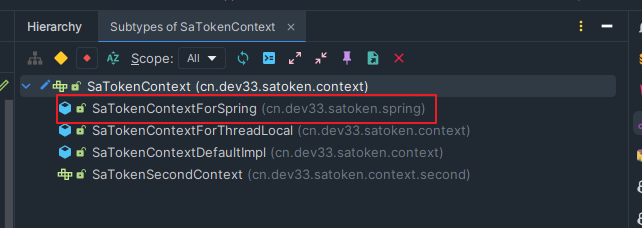
sa-token非Web上下文无法获取Request
0x02 非Web上下文无法获取Request 问题定位 在我们使用sa-token安全框架的时候,有时候会提示:**SaTokenException:非Web上下文无法获取Request**** 错误截图: 在官方网站中,查看常见问题排查: 非Web上下文无法获取…...

tomcat 常见优化方案
tomcat作为Web服务器,它的处理性能直接关系到用户体验,下面是几种常见的优化措施: 对web.xml的监视,把jsp提前编辑成Servlet。有富余物理内存的情况,加大tomcat使用的jvm的内存 服务器所能提供CPU、内存、硬盘的性能…...

前端导出文本内容为csv文件,excel乱码
原因:编码格式问题,需要改为utf-8 bom // Create blob with utf8-bom 编码 const createBlobWithBOM(data, mimeType)> {const bom [0xEF, 0xBB, 0xBF];const bomArray new Uint8Array(bom);const dataArray new TextEncoder().encode(data);const…...
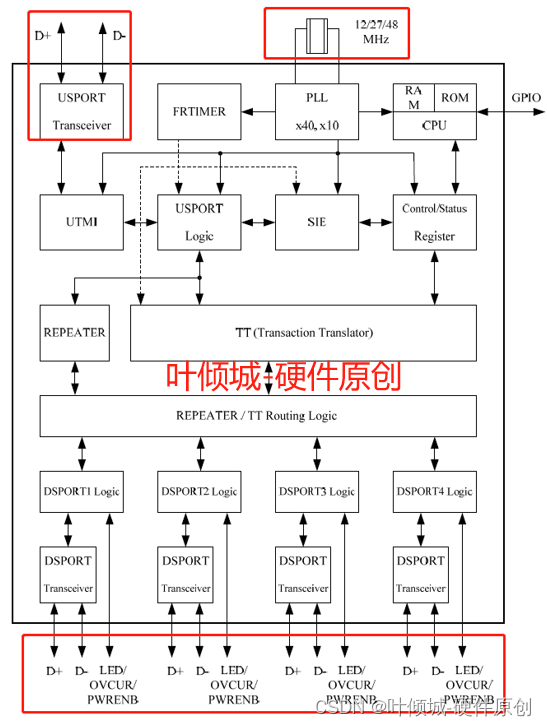
36---USB HUB电路设计
视频链接 USB HUB电路设计01_哔哩哔哩_bilibili USB HUB 电路设计 1、USB HUB基本介绍 USB Hub,指的是一种可以将一个USB接口扩展为多个,并可以使这些接口同时使用的装置。 Hub也是大家常说的集线器,它使用星型拓扑结构连接多个USB接口设…...

FPGA在深度学习领域的应用的优势
FPGA(Field-Programmable Gate Array)是一种可编程逻辑芯片,可以根据需要重新配置其内部的逻辑电路和功能。在深度学习领域,FPGA被广泛用于加速模型训练和推理任务。 首先,FPGA可以提供高度定制化的计算架构ÿ…...

Windows Edge 兼容性问题修复 基本解决方案
Windows Edge 浏览器兼容性问题可能源于多个方面,以下是一些常见的问题及其处理结果: 插件或扩展冲突:某些第三方插件或扩展可能与Edge浏览器不兼容,导致崩溃或运行异常。处理结果为,尝试禁用所有插件和扩展ÿ…...
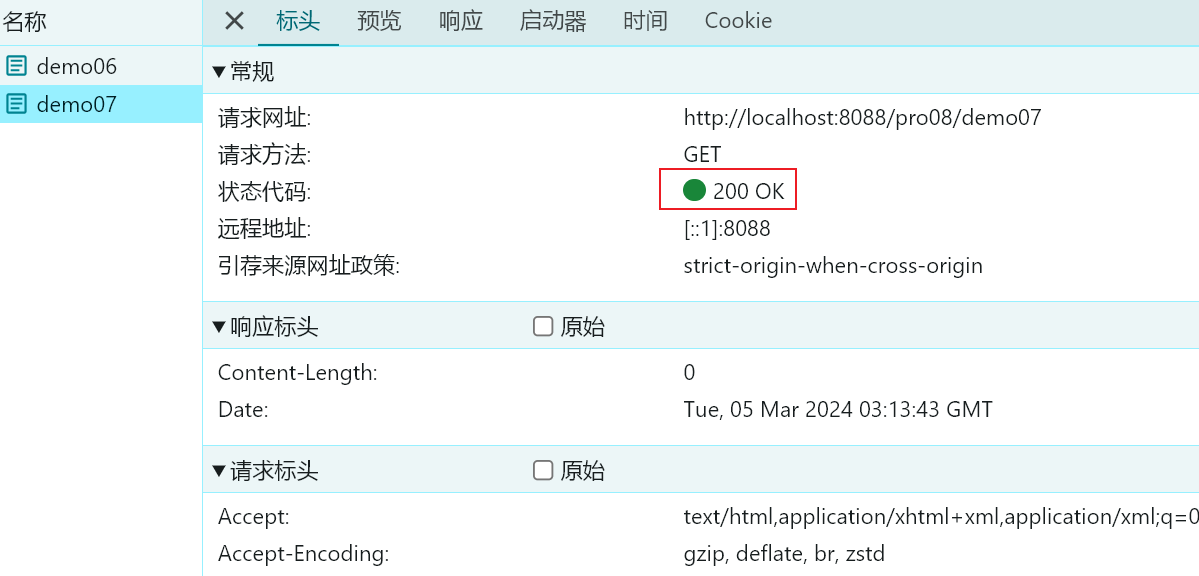
【Servlet】服务器内部转发以及客户端重定向
文章目录 一、服务器内部转发:request.getRequestDispatcher("...").forward(request, response);二、客户端重定向:response.sendRedirect("");三、服务器内部转发代码示例四、客户端重定向代码示例 一、服务器内部转发:…...

是否有替代U盘,可安全交换的医院文件摆渡方案?
医院内部网络存储着大量的敏感医疗数据,包括患者的个人信息、病历记录、诊断结果等。网络隔离可以有效防止未经授权的访问和数据泄露,确保这些敏感信息的安全。随着法律法规的不断完善,如《网络安全法》、《个人信息保护法》等,医…...

Java设计模式详解:单例模式
设计模式详解:单例模式 文章目录 设计模式详解:单例模式一、单例模式的原理二、单例模式的实现推荐1、饿汉模式2、静态内部类 三、单例模式的案例四、单例模式的使用场景推荐总结 一、单例模式的原理 单例模式听起来很高大上,但其实它的核心…...

Pointnet++改进即插即用系列:全网首发OREPA在线重新参数化卷积,替代普通卷积 |即插即用,提升特征提取模块性能
简介:1.该教程提供大量的首发改进的方式,降低上手难度,多种结构改进,助力寻找创新点!2.本篇文章对Pointnet++特征提取模块进行改进,加入OREPA,提升性能。3.专栏持续更新,紧随最新的研究内容。 目录 1.理论介绍 2.修改步骤 2.1 步骤一 2.2 步骤二 2.3 步骤三...
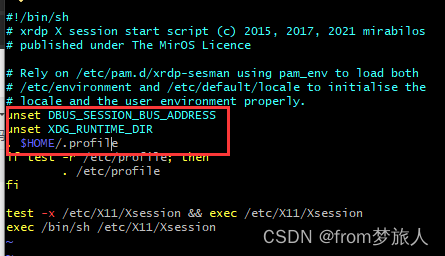
XRDP登录ubuntu桌面闪退问题
修改 /etc/xrdp/startwm.sh unset DBUS_SESSION_BUS_ADDRESS unset XDG_RUNTIME_DIR . $HOME/.profile...

【Node】使用Node.js构建简单的静态页面生成器
使用Node.js构建简单的静态页面生成器 在现代的Web开发中,静态网站因其速度快、安全性高而越来越受到开发者的青睐。本文将介绍如何使用Node.js构建一个简单的静态页面生成器,通过这个小项目,你将了解到静态网站生成的基本原理和实现方法。 …...

AI智能客服机器人是什么?对企业重要吗?
在数字化时代,客户服务是企业与客户建立牢不可破关系的重要桥梁。AI智能客服机器人,顾名思义,就是利用人工智能技术提升客户服务体验的自动化工具。今天,就让我们来揭开AI智能客服机器人的神秘面纱,并讨论它对企业的重…...

InfluxDB2的数据查询示例
有用influxdb2 不支持sql,并且实质是个列存储数据库,这里基于 influxdb-client-java 和 beanutils反射,写了个数据查询,把结果以行对象的形式返回的工具类。 package com.joy.malltools.influxdb2;import com.influxdb.client.Q…...

CSS基础语法-黑马跟课笔记-供记录与查询
一.CSS简介 1.1HTML局限性 只关注内容的语义,可以做简单的样式但是很臃肿且繁琐 1.2CSS优势 CSS层叠样式表,标记语言 设置HTML页面中的文本内容,图片外形,可以美化HTML,让页面布局更美观 HTML做框架,…...

「PHP系列」PHP数组排序及运用场景
文章目录 一、PHP 数组排序二、PHP 数组排序使用场景数据排序介绍数据排序案例 三、相关链接 一、PHP 数组排序 PHP 提供了多种数组排序函数,允许你根据数组元素的值或键进行排序。 sort() sort() 函数用于对数组的元素按升序进行排序。它会修改原始数组…...

VScode debug python(服务器)
方法一: 创建launch.json文件: launch.json文件地址: launch.json文件内容: {"version": "0.2.0", //指定了配置文件的版本"configurations": [{"name": "Python: Current File&…...

5.11 Vue配置Element UI框架
Vue配置Element UI框架 目录一、 概要二、 开发前准备1. 搭建Vue框架 三、 安装 Element UI1. 引入 Element UI 依赖2. 在 main.js 中引入 Element UI 和相关样式:3. 按需引入(非必须, 可忽略)4. 简单构建一个主页面 目录 一、 概要 Element UI 是一个基于 Vue.js …...

DolphinScheduler on k8s 云原生部署实践
文章目录 前言利用Kubernetes技术云原生平台初始化迁移基于Argo CD添加GitOpsDolphinScheduler 在 k8s 上的服务自愈可观测性集成服务网格云原生工作流调度从HDFS升级到S3文件技术总结 前言 DolphinScheduler 的高效云原生部署模式,比原始部署模式节省了95%以上的人…...

JVM将虚拟机分成了哪几块区域?
Java 8之后,JVM(Java Virtual Machine)继续沿用原有的内存区域划分,主要包括以下几个部分: 1、堆(Heap): 用途:存储对象实例,几乎所有通过new关键字创建的对…...

【热门话题】WebKit架构简介
🌈个人主页: 鑫宝Code 🔥热门专栏: 闲话杂谈| 炫酷HTML | JavaScript基础 💫个人格言: "如无必要,勿增实体" 文章目录 WebKit架构简介一、引言二、WebKit概览1. 起源与发展2. 模块化设计 三、WebCore…...

顶顶通呼叫中心中间件-话术编辑器机器人转人工坐席配置(mod_cti基于FreeSWITCH)
顶顶通呼叫中心中间件-话术编辑器机器人转人工座席配置(mod_cti基于FreeSWITCH) 配置方法 一、ACD排队转接 二、伴随转接 比如你设置的通知规则是任意满足一个就通知那么通话时间设置为10 秒那样他只要通话时间到10秒他就会转坐席。 如果要转人工的时侯转手机可以这样配置 把…...

【嵌入式开发 Linux 常用命令系列 8 -- shell 命令 basename 介绍】
请阅读【嵌入式开发学习必备专栏 】 文章目录 shell 命令 basenamedf 命令 shell 命令 basename 在 shell 脚本中,可以使用 basename 命令来获取文件的基本名称(不带路径的部分)。以下是如何将文件名赋值给变量的示例: file_pat…...
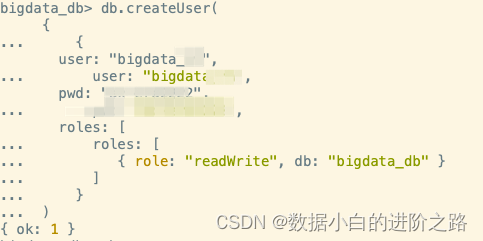
使用docker部署MongoDB数据库
最近由于工作需要搭建MongoDB数据库:将解析的车端采集的数据写入到数据库,由于MongoDB高可用、海量扩展、灵活数据的模型,因此选用MongoDB数据库;由于现公司只有服务器,因此考虑容器化部署MongoDB数据,特此…...
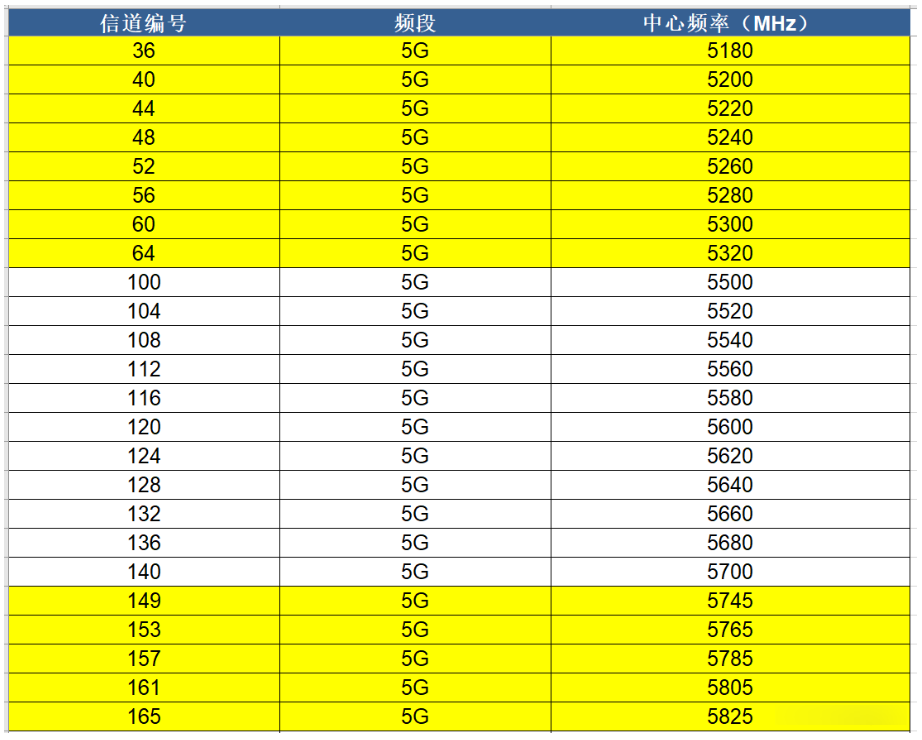
3. WiFi基本原理
1. WiFi简介 WiFi的全称是Wireless Fidelity。它是一种无线网络通信技术,由Wi-Fi联盟拥有,目的是改善基于IEEE 802.11标准的无线网络产品之间的互通性,允许电子设备在没有物理连接的情况下进行高速数据传输。此外,WiFi也被视为IE…...

详解人工智能(概念、发展、机遇与挑战)
前言 人工智能(Artificial Intelligence,简称AI)是一门新兴的技术科学,是指通过模拟、延伸和扩展人类智能的理论、方法、技术和应用系统,以实现对人类认知、决策、规划、学习、交流、创造等智能行为的模拟、延伸和扩展…...

flyway的使用
什么是flyway Flyway是一个开源的数据库版本控制工具,用于在应用程序的开发和部署过程中管理数据库结构的变化。它允许开发团队使用简单的脚本语言(通常是SQL)来描述数据库的变化,并将这些脚本应用于目标数据库。Flyway还提供了版…...



